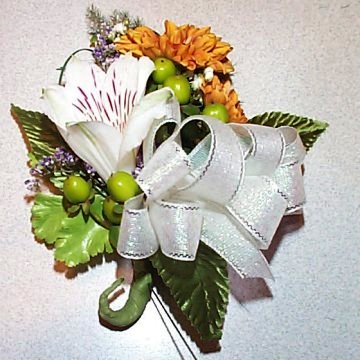chrysanthemum boutonnieres
Chrysanthemum boutonnieres hold up well, especially in hot weather when compared to more delicate blooms. They are very hardy.
Alternate adding greens and flower heads, lowering each stem a little lower than the one above it.
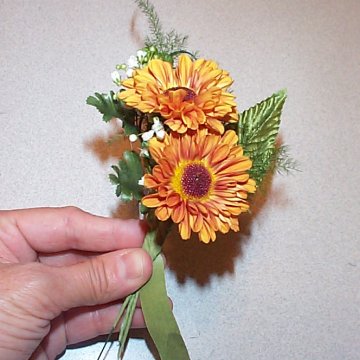
Add in a sprig of baby's breath occasionally. Take care not to overdo filler flower. The focal flowers should draw the attention of the eye. Allow filler flowers to peek out between the larger flower heads and the greens should just extend a short amount beyond the largest flowers.
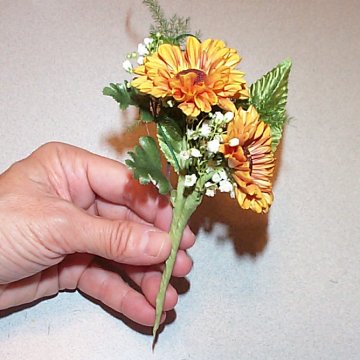
I added a cluster of green hypericum berries and fitted a large leaf under the bottom, tilting towards the right. Tape the wired stems smoothly and curl up gently, taking care there are no bare wire tips to snag fabric.
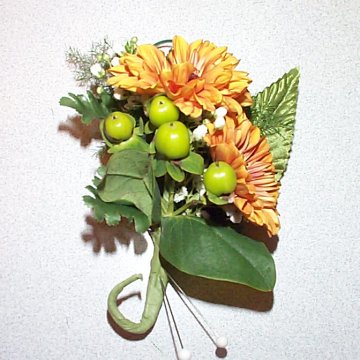
The finished boutonniere is always pinned to the wearer's right. I like to use larger corsage pins, pushing the point of the pin from the back of the lapel, pushing the pin in an upward motion. Be sure to bury the pin inside a flower head so not to prick any fingers.
Take care that the boutonniere does not droop downward. You may need an additional pin, this time applied from the back of the tux lapel and pinning downward, taking care to catch the flower cluster and bury the pin tip into the lapel fabric.
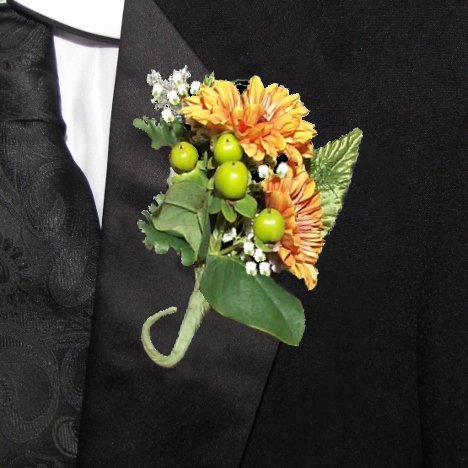
This simple boutonniere can be easily turned into a pinned corsage with the addition of a few more flowers (such as this alstroemeria bloom) and a small bow. I also added another cluster of hypericum berries and a few sprigs of purple limoneum.
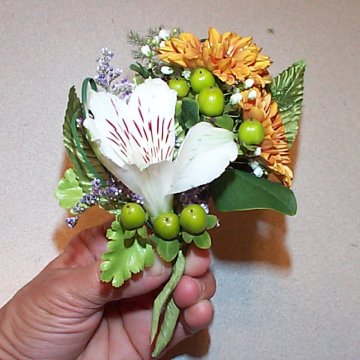
It's easier to make corsage bows from stiff ribbon than using double faced satin, which is soft as fabric bow dress accents.
